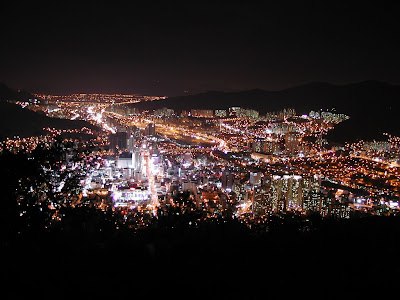identification of a problem
Energy is perhaps one of the most critically significant aspects of metabolism, the simplistic view of food = energy misses the point on how that energy is generated and transported.
While many animals put food into their mouth and digest it in their intestinal tract its is not just the end of the story. If we think of both kinetic and potential energy then chemistry contains potential energy and things like muscles turn that into kinetic energy and places like the brain and neural systems use that potential energy for other processes.
So while energy is perhaps centrally generated (by the gut) it is distributed to locations and then converted locally on demand.
I've been thinking of writing about this topic for a while, but last night I happened to be watching a BBC programe called "Britan from above". This went a little into depth about the issues of managing loads and demands on the electrical system. Starting with an overview of the City of London, they observed all the patterns of activity from the air and remarked how much like a machine it was to observe the way millions of people went about their daily lives "on that tiny island". It immediately piqued my Urban Metabolism mind as being exactly a good description base.
 As night fell on the city they rose to altitude to see the network of lights and started to consider the generatoin of electricity. From here they cut to an interview with the senior electrical controller of the UK's electrical grid, where they discussed the nightly ebb and flow of electrical demands within the UK.
As night fell on the city they rose to altitude to see the network of lights and started to consider the generatoin of electricity. From here they cut to an interview with the senior electrical controller of the UK's electrical grid, where they discussed the nightly ebb and flow of electrical demands within the UK.This was simply a stunning display of what is wrong with our fundamental paradigm of energy generation and distribution.
Simon (as he was named) sat with a TV on tuned into the "East Enders" waiting for the end of the program so that he could cue in massive additions to available the power grid to cope with peaks in demand of 600 mega watts occurring just because everyone would get up and put the kettle on.
He pulled in power from several hydro electric systems all cued to suddenly inject massive amounts of power into the grid (potentially frying it if not balanced) and even had to pull power from generators in France.
A stunning display of the effects of distributed but synchronised demands.
Imagine for example you're talking on the phone and walking across the road on the phone and suddenly "Bwaaaaaa" a bus blows its horn and you realise "shit, there's a bus coming straight at me"
You suddenly put everything you've got and lurch out of the way. In that instant you drew together almost every muscle you had and pulled quite a peak demand on your system.
You didn't need to cue in power from the bloke next to you, so clearly you're managing your energy much better than the urban metabolism is presently.
the natural solution
So how do we do it ... I mean as metabolic organisms we can't just pull power from external sources when we suddenly need to call upon every muscle of our body. Lets go back to look at our metabolism and we see that while we get energy from consuming food, we transport that energy to be stored in locations (or reservoirs) like fat and perhaps less obviously in blood sugar and Glycogen.
This blood sugar is the energy reserve which is called upon to provide the muscles with the energy (ATP) they need for providing the kinetic energy. There is even a mechanism (the Mitochondria) to keep this going well past the point where Oxygen is available in the system.
This system (unlike the electrical grid) decouples conversion of the energy resource (food for us or coal for the power station) from the delivery of energy at the site. I think its fair to say that almost all organisms from the simplest single cell organisms through to mammals follow this strategy.
solutions suggested by this analysis
 For our city, electricity (not APT) is the currency of energy. We convert the chemical energy stored in our fuels using a chemical process (burning), a nuclear process (using thermal capture and steam to make the conversion) or even capture of kinetic energy in the form of hydro electrical generation. What ever way we use we get our energy as electricity there. From there we distribute it to the homes or businesses (the cells) via a network.
For our city, electricity (not APT) is the currency of energy. We convert the chemical energy stored in our fuels using a chemical process (burning), a nuclear process (using thermal capture and steam to make the conversion) or even capture of kinetic energy in the form of hydro electrical generation. What ever way we use we get our energy as electricity there. From there we distribute it to the homes or businesses (the cells) via a network.Economies of scale mean that its better to make the conversion to electricity in the power station and transport it to us, so learly what we need to do is store that energy to use it when we need it not just when its made.
A quick review of the electrical industry will soon reveal that its not a problem to generate the average amounts of energy we need, its just dealing with the spikes which is the problem. Some sort of reservoir of energy at our homes would be ideal.
Well, that doesn't take much thinking as we have had rechargable batteries for well over a century. These can provide both deep cycling (long discharge) and support many cycles of charge and discharge.
A system like this takes (say) 5% of your maximum demand all the time and provides the extra resources of energy for the shorter times when you actually need them. Times like:
- when the lights are all turned on around the town as people wake up to go to work,
- when the fridge motor kicks in to start cooling down your fridge
- when you start cooking dinner or boiling the jug (if you aren't diversifying your energy already by using Gas that is...)
- take 90% of the fluctuations out of the system,
- make management and planning of the infrastructure easier
- be more compact and cheaper than those used in Solar Electrical Systems (because they could be trickle charged all the time)
This also brings with it an added benefits of;
- security: whole regions could be 'blacked out' without impact for short time and damage to the grid would not be as catastrophic
- capacity building: enhanced knowledge and awareness of power usage by each householder will likely result in more interest / knowledge in efficient behavior
- economic benefits: a more distributed "power economy" would also result in the generation of some new long term jobs perhaps in the maintenance of home storage systems
I'm actually surprised that people are not thinking of doing this already ...





 If you are unfamiliar with this line of thinking, consider
If you are unfamiliar with this line of thinking, consider  I think one of the key observations in biology is to discover how complex single cell organisms actually are.
I think one of the key observations in biology is to discover how complex single cell organisms actually are.  Brisbane City at Night
Brisbane City at Night


